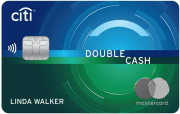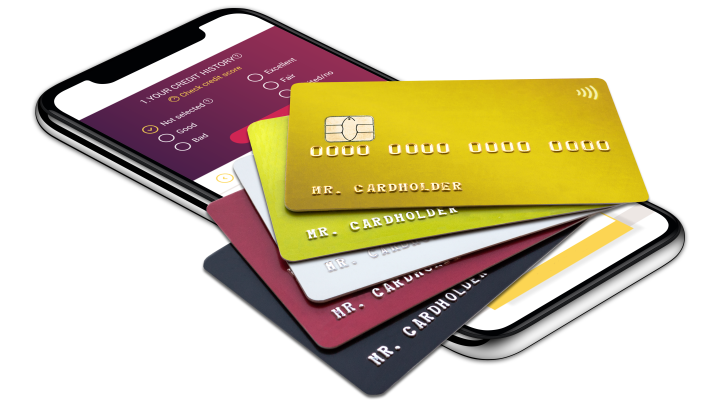The content on this page is accurate as of the posting date; however, some of the offers mentioned may have expired.
Citi is a Credit-Land.com advertising partner.
Some of the offers on this page may no longer be available through our site.

When you need to pay off your credit card debt, balance transfer credit cards are a popular option. The reason for their popularity is simple: they offer a real 0% intro APR on balance transfers. It is not a deferred interest, but a real 0% APR for an introductory period. A balance transfer credit card is also good when you need to consolidate your debt from multiple credit cards. Whatever your needs are, a credit card balance transfer may help you save money on interest when transferring high-interest debt. Read on to learn more about how balance transfers work and how to do a balance transfer on a credit card.
What is a balance transfer?
A balance transfer is moving your debt from one credit card to another credit card (usually with a lower or zero introductory rate). In most cases, transferring your debt is a way to save money on interest: when you move your debt to a 0% intro rate credit card, most of your monthly payments will go to pay off your debt, rather than interest you are accruing.
You can also use balance transfers for consolidating several balances with different card issuers onto one card with one payment to simplify bills. When used wisely, a 0% intro APR (annual percentage rate) credit card can help you pay off debt quicker without paying a penny in interest.
With today's choice of balance transfer credit cards, you can easily find the one that is right for you. Depending on your financial situation and your long-term goals, you can choose a card with no annual fee or rewards; or with 0% intro APR on purchases in addition to the 0% intro APR on balance transfers, like the Wells Fargo Reflect® Card. Keep in mind that the amount you can save depends on how long the no-interest period lasts, any balance transfer fees you'll need to pay, and the go-to rate that'll kick in after the promotional period expires.
Here are some key things to know about credit card balance transfers:
- Balance transfers between cards issued by the same bank are not allowed.
- Some banks also allow balance transfers from loans and store cards.
- You generally need good or excellent credit to get a 0% intro APR credit card.
- A balance transfer fee usually ranges from 3% to 5% of the amount you transfer.
- A balance transfer is most worth it when you can get a 0% intro APR offer and pay off the transferred balance before the promotional period ends.
How do balance transfers work?
When you transfer a balance to a credit card, the issuer of the card pays off your debt on the card you transfer from. Your old card remains open, but the debt is on the new card and your payment obligation has shifted to a new card's issuer.
You can request a balance transfer when you apply for a new credit card or after you receive your new card and know your exact credit limit. However, the sooner the better, as many 0% APR balance transfer offers should be initiated and completed within a specified period of time. For example, with the Citi Rewards+® Card (expired offer), all balance transfers should be completed within 4 months of account opening.
Plus, all promotional periods are limited in time, and if a 0% APR period starts on the day the card is open and not on the day of a balance transfer, you will have less time to pay off your debt when you transfer a balance at a later date.
To initiate a balance transfer, you'll need to prepare some information:
- The account number (or numbers if you are transferring from more than one card) of the card from which you are going to transfer the balance.
- The amount you wish to transfer.
- Your name, Social Security number, employment information and other standard credit card application information.
It can take up to 21 days to process a balance transfer, but it can be processed faster. For example, with Discover, you'll have to wait for 4 - 10 days for a balance transfer to be processed. The important thing to do while waiting for a balance transfer to post is to continue making payments with your existing card (from which you transfer) until the balance transfer is complete.
After the balance transfer is completed, you will be responsible for paying at least the minimum due each month, which will be enough to keep any 0% intro APR your card offers. However, paying only the monthly minimum won't help you to pay off your debt in full by the end of the promotional period. You'll need to pay more than the minimum due for that. If you are unable to pay off the card balance by the end of the introductory period, your ongoing interest rate will apply to all remaining and new balance.
How to do a balance transfer
If you think a balance transfer card can help you in your financial situation, you can initiate a balance transfer. You can use these steps below as a guidance on how to do a balance transfer on a credit card:
- Check your credit score. Most 0% balance transfer credit cards require good or excellent credit for approval. So if you haven't checked your scores for a while, it'd be wise to see where you stand before you apply for any new credit card.
- Review your debt. Whether you are planning a balance transfer from one of your accounts or from several cards, you should know exactly how much you owe, your current interest rates, minimum monthly payments, and how much you can afford to pay each month. Decide how much you can transfer. If you cannot consolidate or transfer all your debt, partial transfers are acceptable.
- Factor balance transfer fees in. It's hard to find a balance transfer credit card with a $0 balance transfer fee. Therefore, it's better to include them into your calculation beforehand, then later discover you have to pay quite a sum for transferring your debt. Most balance transfer credit cards charge between 3% and 5% of each balance you transfer.
- Make a payoff plan. You need a strategy if you want to get rid of your debt and save money. Make sure you understand what monthly payments you'll need to make and how much time you'll need to be debt free by the time a standard APR applies. You will also need a strategy in case of emergencies or unforeseen situations.
- Choose a balance transfer card. Now you are ready to choose a balance transfer credit card. The zero introductory periods often last about 12 months. However, some issuers offer promo rates for up to 21 months. For example, you can enjoy a long 0% intro APR with the Wells Fargo Reflect® Card. While deciding on the length of the introductory periods, don't forget about balance transfer fees, annual fees, and standard APRs.
- Authorize a balance transfer. If you didn't initiate a balance transfer during your application, you can do it after approval (which is the best way). You can initiate a balance transfer online or by phone by providing account information for the cards you'd like to pay off. Continue making on time payments on all your accounts - remember, the balance transfer takes time, and it does not close your old cards. Your cards will remain active until you close them. When the transfer is completed, the balance on your old card should drop to zero (if you transferred the entire balance), and the transferred balance will appear on your new card along with any balance transfer fees.
- Don't close the original account. As mentioned, your old card won't be closed automatically after the balance transfer is completed. And we actually recommend keeping it open, even if you are not going to use it (and especially if it has no annual fee). This will prevent your overall utilization ratio from changing for the worse and as a result, changes to your credit score may not be as dramatic.
- Make regular payments. Since your goal is to pay off your debt and not to increase it, you need to make all monthly payments on time while your APR is 0%. Just to give you the idea how much you need to pay each month, divide your total card balance by the number of remaining months of the introductory period. It would be wise to pay a bit extra than this amount, just to be on the safe side.
What to look for in a balance transfer credit card
The right balance transfer credit card may help you save big money. Therefore, you need to consider some main factors while choosing a balance transfer credit card:
- Introductory rate: Look for cards with 0% introductory rates as they provide the most savings. Even if you do not have great credit, you can still find offers for fair credit.
- Long promotional period: The longer the introductory period, the bigger your savings and the less strain on your budget. Many cards have periods of 12 months, but look for those that offer 18 - 21 months, if you qualify.
- Low transfer fees: Some cards offer introductory balance transfer fees if you initiate your balance transfer within the allotted time. If you see a card with no balance transfer fee, you may want to grab the deal. However, sometimes paying the balance transfer fee can be worthwhile, so make some calculations before you apply.
- Standard interest rates: Whether you want it or not, your introductory 0% APR will eventually end. When it happens, a go-to balance transfer APR will apply. If there is some balance left from the transfer, that balance will start accruing interest.
Balance transfer credit cards you may like
There are many balance transfer offers out there, so you will easily find the one for your needs and financial situations. Here are some examples which we believe may be of interest to you:
Discover it® Chrome
Long 0% intro APR, no annual fee, and cash back.
The card offers one of the longest zero introductory periods on balance transfers - 18 months of 0% intro APR. That's more than a year and a half. When the promo period is over, a standard rate will apply - 17.74% - 26.74% Variable APR *Rates as of December 15, 2025.
In addition to the promo rate, the card also comes with a promotional balance transfer fee. You will have to pay a 3% intro balance transfer fee on balances transferred with the current balance transfer offer. After the intro rate, all future balance transfers will cost up to 5% (see terms*).
As a bonus, the card will reward you for all purchases with up to 2% cash back. So if you decide to keep the card after you pay off the transferred balance, it may become your number one cash back card.
Learn more and apply for the Discover it® Chrome.Wells Fargo Reflect® Card
21 months of 0% intro APR and no annual fee.
If you wanted to concentrate on paying off your debt, this is the card for you. The card offers 21 months of 0% intro APR on qualifying balance transfers. That's almost two years of 0% intro APR!
There are some important things to note, though. There is a balance transfer fee. To qualify for a low intro balance transfer fee, all balance transfers should be completed within 120 days. When the zero promo APR is over, the card's go-to APR will apply - 17.49%, 23.99%, or 28.24% Variable APR.
The card has no annual fee, so you won't have to worry about extra charges.
Learn more and apply for the Wells Fargo Reflect® Card.What else should you know?
Transferring a balance is a wise move in your debt repayment plan. But what if you still have a balance after the introductory APR period expires? The remaining balance will start accruing interest at a nasty APR. If you can pay it off within a couple of months, go ahead, you won't lose much. But if the remaining balance is big, you still have options.
It's possible to transfer your remaining balance to a new balance transfer credit card. However, it may be risky as you may get denied or not being approved for the amount you need.
If you need more time to pay down your debt, it may be better to consider a loan to consolidate your debt.
Another frequent question that may arise is whether you can use a balance transfer credit card to make purchases. Well, technically, yes, but you shouldn't (even with an intro rate on purchases). Purchases you make with a balance transfer credit card will only increase your debt and it will be harder to pay it off. You'll increase the risk of not paying down your transferred balance within the promotional period. And if the card has no intro APR on purchases, they will accrue interest.
Another important thing is the amount you can transfer. Usually, it is up to the limit on your new credit card. However, some issuers may limit that amount to some percentage of your available credit limit. Try to find out these limits in advance or your balance transfer request may be rejected.





